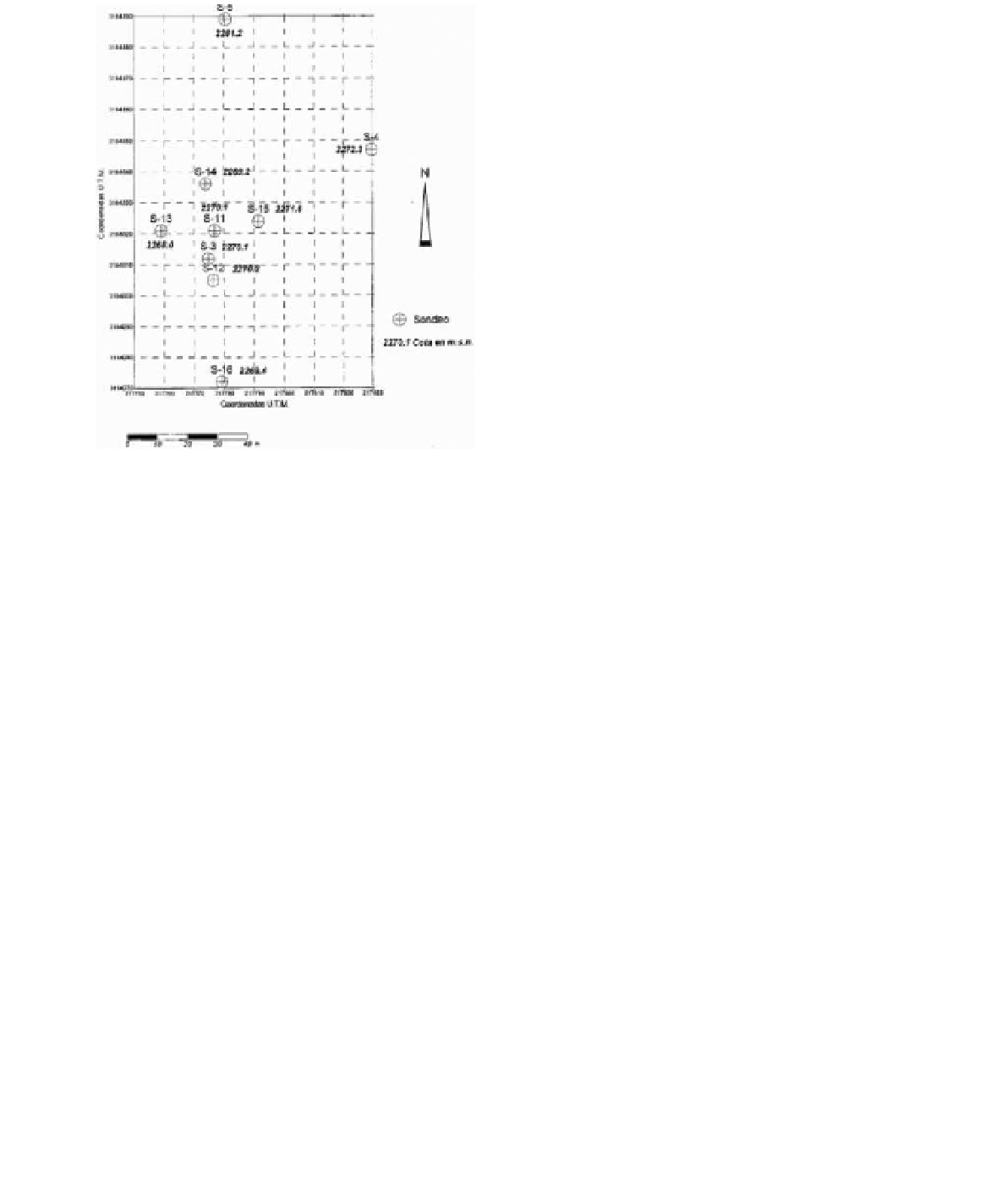Environmental Engineering Reference
In-Depth Information
none of them showed plasticity of the fine
fraction, soluble sulfate content, organic matter in
significant quantities.
The specific humidity is not representative of
actual conditions in the ground due to water drilling.
as the samples were disturbed, it was not
possible to determine their density. Their compari-
son with other materials in situ associates a value
of 20 to 22 kn/m
3
.
lava M:
5 samples were waxed. Ultrasound measurements
and compressive strength were performed on rock.
The compressive strengths had an average of
69.894 n/mm
2
. (Min = 24.71 and Max = 153.06).
The average density was 26.4 kn/m
3
(Min = 25.6
Max = 26.8).
The average speed of propagation of ultrasound
is 3129 m/s, which implies a high density and low
microfracturing.
Pyroclastic mantle Q:
The rock has a Q Barton index value of 13 which
corresponds to a good rock.
The rock provides an index of Bieniawski RMR
1979 value of 63 which corresponds to a rock class
ii (good).
it is composed of rock fragments with gravel-
sand grain size, with a little cementation grade that
allows to find it in some zones as a soft rock.
2 samples were waxed. Ultrasound measure-
ments and compressive strength were performed
on rock. The compressive resistance gave values of
1.18 n/mm
2
and 1.36 n/mm
2
.
The average density was 12.8 kn/m
3
.
The average speed of propagation of ultrasound
was 675 m/s.
Figure 2.
Boreholes location.
During the surveys granular nature of the soil
is verified, with varying fines content, little or no
plastics, soil or weathered rock found.
Then, it was nearly impossible to obtain a truly
undisturbed sample of granular soil. To complete
the geotechnical characterization of soils the
results of sPT (standard Penetration Test) and
geophysical tests were used.
The description of the geotechnical characteris-
tics of each stratum is as follows:
lava s:
3 samples were taken and determinations of
plasticity, soluble sulfate content, organic mat-
ter content and grain size distribution tests were
performed.
none of them showed plasticity of the fine
fraction.
The soluble sulfate content did not exceed 0.02%.
organic matter was less than 1%.
The specific humidity is not representative of
actual conditions in the ground due to water drilling.
as the samples were disturbed it was not pos-
sible to determine their density. The results of sPT
and lava source of fine particles, associates a value
of 20 to 22 kn/m
3
.
Pyroclastic mantle P:
has not been sampled due to its thinness and
discontinuity.
Unrecognizable stratum:
4 samples were taken and determinations of
plasticity, soluble sulfate content, organic matter
content and particle size were made.
4
PRoJecT ReQUeRiMenTs (3)
The pier is basically a concrete cylinder of 17.0 m out-
side diameter, 1.0 m thick and 7.20 m high, with two
concrete slabs, one located at the base and the other
at a height of 4.35 m with reference to the base.
The center of the telescope pier is located in UTM
coordinates, X = 217,760, Y = 184,335, Z = 2265.
The pier stiffness and the pier first resonance fre-
quency requirements are shown in Tables 1 and 2.
The pier foundation requirements were the
following:
For any combination of loads, the differential
seat between any two points of the pier must be
less than 2 mm / year.
The maximum seats for the life of the facility
should be smaller than 10 mm.
The foundation of the pier must be independent
from other foundations and transmission of
vibrations in adjacent foundations will be minimal
or avoided.














